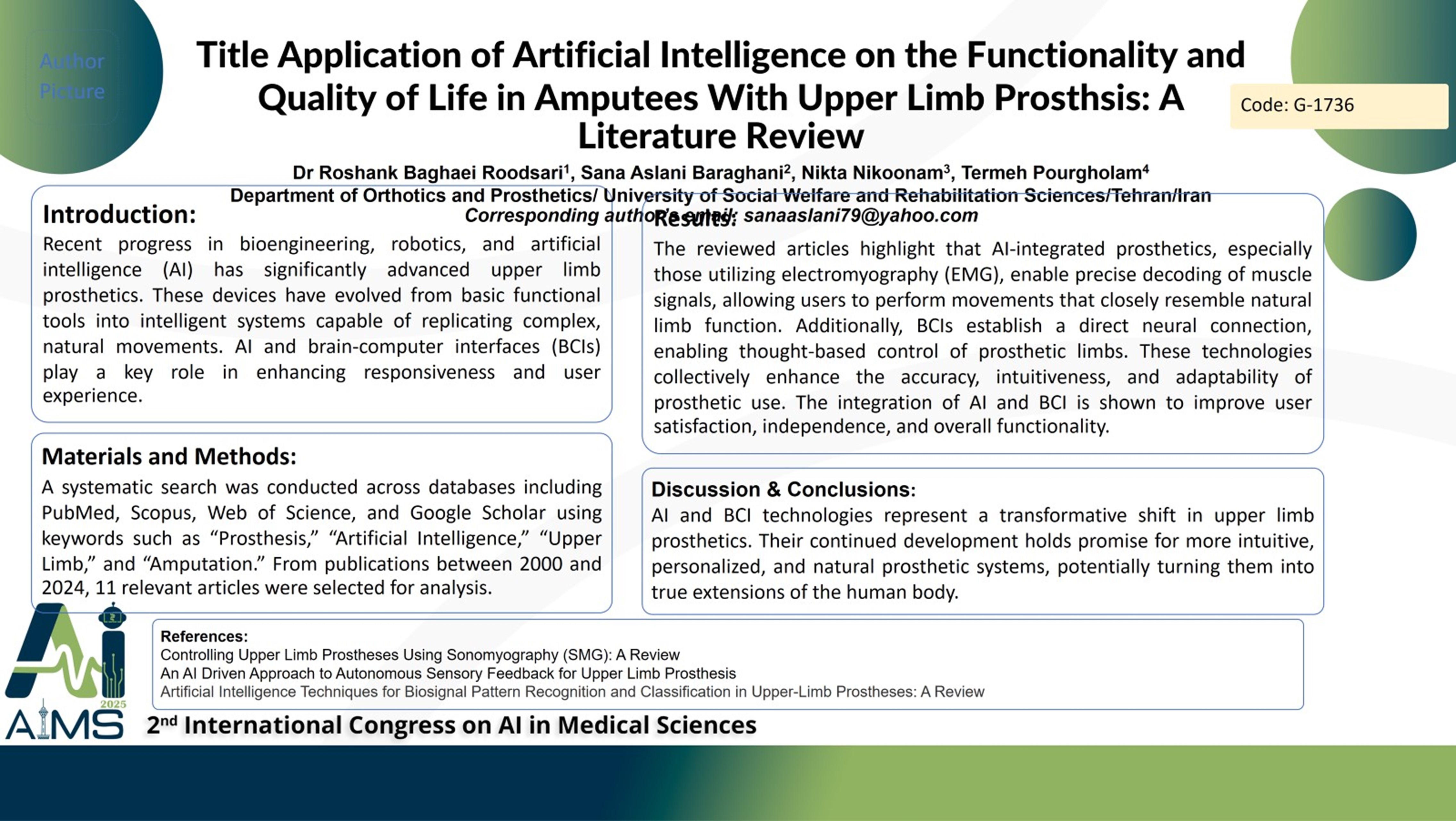Application of artificial intelligence on the functionality and quality of life in amputees with upper limb prosthetics: A Literature Review
Code: G-1736
Authors: Dr Roshank Baghaei Roodsari, Sana Aslani Baraghani * ℗, Nikta Nikoonam, Termeh Pourgholam
Schedule: Not Scheduled!
Tag: Intelligent Virtual Assistant
Download: Download Poster
Abstract:
Abstract
Introduction: Recent progress in bioengineering, robotics, and artificial intelligence (AI) has significantly advanced upper limb prosthetics. These devices have evolved from basic functional tools into intelligent systems capable of replicating complex, natural movements. AI and brain-computer interfaces (BCIs) play a key role in enhancing responsiveness and user experience. Objective: This study aims to review the role of AI and BCI technologies in improving the functionality, adaptability, and user control of upper limb prostheses, with a focus on quality of life outcomes for individuals with amputations. Materials and Methods: A systematic search was conducted across databases including PubMed, Scopus, Web of Science, and Google Scholar using keywords such as “Prosthesis,” “Artificial Intelligence,” “Upper Limb,” and “Amputation.” From publications between 2000 and 2024, 11 relevant articles were selected for analysis. Results and Discussion: The reviewed articles highlight that AI-integrated prosthetics, especially those utilizing electromyography (EMG), enable precise decoding of muscle signals, allowing users to perform movements that closely resemble natural limb function. Additionally, BCIs establish a direct neural connection, enabling thought-based control of prosthetic limbs. These technologies collectively enhance the accuracy, intuitiveness, and adaptability of prosthetic use. The integration of AI and BCI is shown to improve user satisfaction, independence, and overall functionality. Conclusion: AI and BCI technologies represent a transformative shift in upper limb prosthetics. Their continued development holds promise for more intuitive, personalized, and natural prosthetic systems, potentially turning them into true extensions of the human body.
Keywords
Prosthesis, Prostheses, AI, Artificial Intelligence
